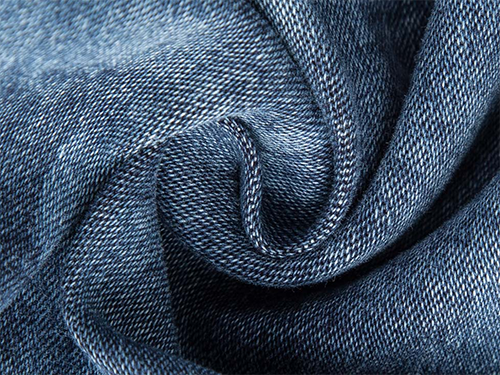
In fact, it is not difficult to determine the quality of denim fabrics, but now denim fabrics are constantly innovating and new fabrics are constantly emerging. Therefore, we need to constantly come into contact with new things and improve our identification ability. There are three methods to evaluate the quality of denim fabric.
1. Visually.
Some friends may have this experience. When going to the market with friends who are familiar with denim fabrics, they usually glance at many fabrics and then lose interest in reading them. They may show great interest in a fabric they occasionally discover. You ask them why they can tell the good or bad at a glance, and they usually can't explain it themselves. This feeling is the sensation of the eyes. Just like practice makes perfect, there are some things that you can easily scan out at a glance if you see too much. Therefore, in the market, it is impossible for us to find a specialized organization for authoritative scientific testing of jeans, so the sense of eye accumulated through years of experience is very important. The quality of one's eyesight depends entirely on one's professional level, just like a football player, whose ability to hit the goal comes from ordinary training levels. A good denim fabric must have a very refreshing style and clear patterns, and the difference can be seen in the washing area, especially in the hand wipe area. Opening the bottom fabric and looking at the weft yarn, the pattern is clear, the lines are even, and there are no too many black spots or other flying flowers woven into impurities. The color of the yarn is white with a yellow color (the kind of white flowers with reflection must be adulterated chemical fibers). If nostalgia is done, the weft yarn on the bottom will appear yellow, which is normal. Denim fabric must depend on its effectiveness after washing. Why do those ordinary people outside only make embroidery and beads, and dare not play with more complex things in washing? In fact, they are afraid that after washing, their inferior nature of the fabric will be exposed. Unfortunately, many consumers who do not know the goods still think that these jeans are very fashionable. Friends who are slightly familiar with denim fabrics know that the feeling of poor fabrics, especially after washing and wiping with water, is truly unbearable. And good fabrics, whether for simple or complex washing, have a high-end feel that is irresistible.
2. Hand touch.
Hand touch mainly relies on the hand to feel the closeness and texture of the fabric. Usually, many consumers still use their fingers to pinch the fabric, but in fact, doing so alone is not scientific. You should cover the entire palm of your hand on the jeans and repeatedly slide it up and down to deeply feel the closeness of the fabric. Many consumers believe that the softer the denim fabric, the better, which is actually unscientific. The softness and hardness of denim fabrics are not only related to the fabric organization style (the denser the organization, the thicker the feel), but also to the characteristics of the yarn (the rougher the feel when the yarn is twisted, and the feel of all cotton and blended yarns is different). In addition, the finishing process usually plays a significant role in the softness and hardness of denim fabrics, such as adding softeners, liquid ammonia treatment, etc., which can affect the feel of the fabric. Overall, denim fabrics should rely on their natural characteristics to achieve a close fitting style, such as excessive reliance on chemical treatment to achieve a soft effect, which actually has little positive impact on the texture of the fabric.
3. Nose smell.
Close to the smell, good fabric should not have any irritating or other odors, and can be used as a pillow to sleep peacefully. Friends who make mainstream jeans in the wholesale market have a feeling that as soon as they enter the market, the taste is irritating. Fabric rings are not environmentally friendly and can be preliminarily identified through sniffing. Those without odors are not necessarily environmentally friendly, but those with odors are definitely unqualified fabrics.
By observing, touching, and smelling these three levels, one can have a general understanding of the quality of denim fabrics. If the fabric cannot pass these three levels, it will definitely not be a high-quality denim fabric. But to completely and scientifically distinguish the quality of denim fabrics, these three points alone are far from enough. We must send it to a specialized testing agency to conduct detailed analysis on many indicators such as color difference, color fastness, environmental protection, fiber composition, wear resistance, bursting strength, tear resistance, shrinkage rate, tensile slope, etc. In terms of practicality, good denim fabric should not only achieve a high-end appearance, comfortable fit, and long service life, but also have good moisture absorption, sweat wicking, wrinkle resistance, and a style that looks more beautiful after washing and has more flavor when getting old, which should be fully reflected.
About
Brief introduction Application Certificate Laboratory Connectproduct
Post finishing agent Enzymatic water Brightener Printing/Coating Additives MoreNews
Dynamic Lnformation Common
Mobile website

TRL:+86 0769-88124837
Chinese mailbox:dgtshdrl@163.com
English mailbox:postmaster@tianshengchem.com
Guangdong Tiansheng Environmental Protection New Material Technology Co., Ltd. Copyright © 2023 all rights reserved